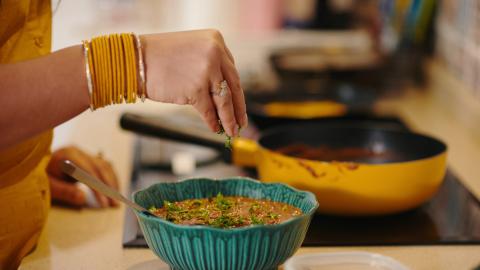The declining significance of the petrochemical industry in Louisiana
Download Full Report
View Press Release

Key Findings
Louisiana, once among the nation’s most economically strong states, now ranks 49th in GDP and population growth.
The petrochemical industry, once 33% of the state economy, is now 14% and facing an uncertain future.
The two most important drivers of the state’s petrochemical industry—ethylene and methanol—are areas that are being proposed for expansion, even as demand is slowing and risk factors mount.
Louisiana needs a new partnership with the private sector that can benefit from the energy transition.
Executive Summary
The decades-long partnership between the state of Louisiana and petrochemical producers is unravelling. The state’s economy is showing clear signs of weakness related to petrochemical market deterioration. Global markets are slowing. Lower demand and market shrinkage is certain. Construction costs are higher. Credit agencies have issued warnings, and the number of petrochemical project cancellations and delays is growing. If this misalignment of policy and market direction continues, it is likely to waste billions in taxpayer subsidies, useful land, and other community assets. It is also likely to crowd out development strategies to promote more beneficial, growing business sectors and to address climate change and cut toxic pollution.
Coal, oil and gas, and petrochemical industries were once major contributors to Louisiana’s economy, but times have changed. The findings of this report tell the story:
- At the turn of the 21st century, Louisiana had one of the country’s fastest-growing economies, placing sixth among the states for five-year average GDP growth. Today, Louisiana ranks 49th out of 50 states in GDP growth. It also ranks 49th in population growth and 45th in median household income.
- In the 1960s, the oil and gas industry accounted for 60% of the state’s total revenues. During the late 1990s, it made up 40%. Today, it provides only 4.5% of state funds.
- The oil and gas and petrochemical industry accounted for 33% of the state’s GDP at the turn of the century. Today, the percentage figure has dropped by more than half, to 14%.
- The industry has declined in terms of growth, jobs, income and tax revenue. Service-oriented and white-collar employment, rather than the oil and gas and petrochemical industry, is now the leading driver of the state’s GDP.
- Development of petrochemical facilities in Louisiana is heavily concentrated in African-American communities. Along the “River Parish corridor” that runs between Baton Rouge and New Orleans, residents have higher incidences of cancer and asthma, and their communities are often collectively dubbed “Cancer Alley.”
These trends, signs of deterioration, are likely to continue for several reasons:
- The state economy faces a portfolio of risks from the oil and gas and petrochemical sector.
- Fossil fuel-driven growth is in decline.
- Increases in sustainable products that take the place of fossil fuel-based products are growing.
- Trade disruptions from new geopolitical realignments and increased concerns over environmental and climate factors have driven oil production down.
- China’s economic plans will affect U.S. exports. The United States was the second-largest exporter of ethylene in 2022, principally sending to China and Belgium. But China has already reduced its ethylene imports by roughly 40% since 2018 and is expected to cut imports more.
- Although fracked gas volumes have increased due to more efficient technologies, more fracked gas has neither turned into more profits for companies and investors nor improved Louisiana’s fiscal position.
Relying on fossil fuels for future revenues and employment is an increasingly risky proposition. Louisiana business growth over the last decade has shifted from manufacturing to services. As a policy matter, however, the state remains overly reliant on petrochemicals when a more diversified set of policies and incentives is warranted.
Despite the warning signs, Louisiana’s economic development tools continue to prop up the industry. Recent governmental and industry pronouncements in Louisiana reveal dozens of expansions and new fossil fuel-driven petrochemical investments. IEEFA has found sufficient information to identify 24 companies with new or expanding projects. IEEFA’s list builds upon a list published by the chemical industry. The 24 companies’ investments collectively amount to $82 billion and have benefited from a total of $6.8 billion in tax exemptions.
IEEFA’s analysis finds most of these projects are misaligned with markets and risk wasting substantial amounts of taxpayer dollars.
The ethylene and methanol markets are two large areas of proposed expansion and new build projects (accounting for 61% of all companies and projects covered in this report). They illustrate the same downward trend as the Louisiana economy. The ethylene market is the bellwether for the petrochemical industry. It is currently oversupplied, faced with new competitive business lines and technologies, as well as new, complicated and disruptive global geopolitical and trade patterns. The methanol market, a building block industry, faces the same set of risks, plus an advanced set of more mature sustainable competitive alternatives.
A recent report on the state’s credit rating by Moody’s Ratings made clear that the No. 1 credit need that would increase Louisiana’s rating is an economic development direction that would bolster GDP growth. Moody’s also makes clear that although the energy transition is creating decline in fossil fuel development—putting the state government’s budget at short-term risk—it is also creating new business opportunities to support new growth.
Louisiana has not yet positioned itself to take full advantage of those opportunities. The state needs a vigorous new economic plan to boost its sagging GDP growth profile.
This paper provides a background description of major trends in the Louisiana economy, including GDP growth, the changing composition of the Louisiana economy, median household income, the state’s fiscal condition and job growth. Section I discusses major risks facing the petrochemical market broadly and where Louisiana fits into the picture. Section II considers the two most important drivers of Louisiana-based petrochemical industry growth plans—ethylene and methanol. Section III sketches a framework for managing decline in the oil and gas and petrochemical sectors, and how the state can work with the private sector to create new partnerships to benefit from the energy transition.

















